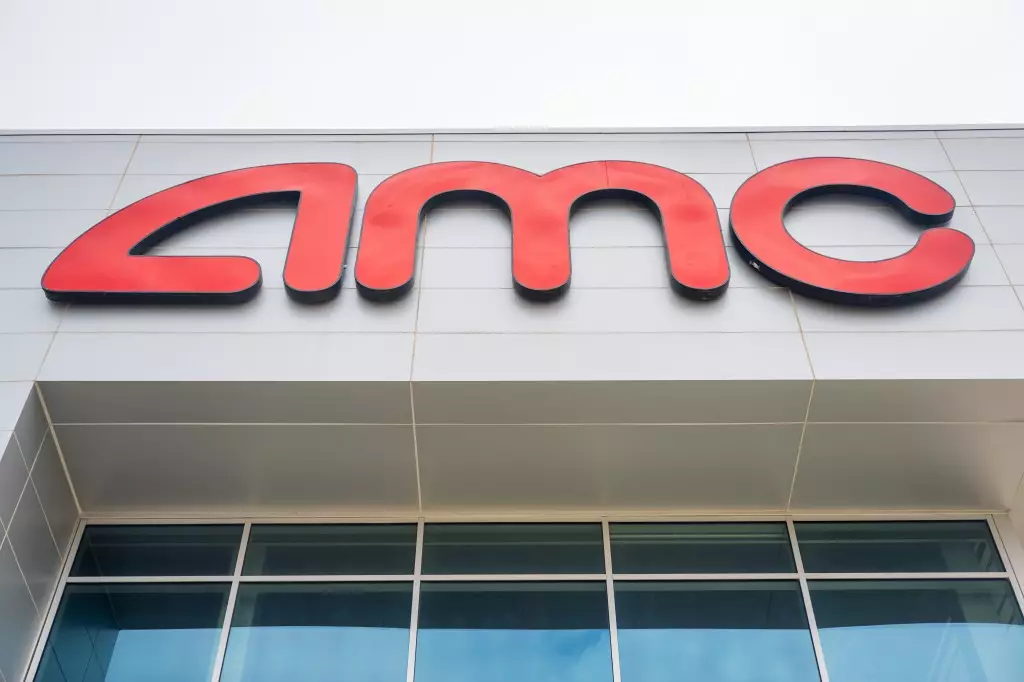AMC Entertainment’s recent financial maneuvers showcase a company that refuses to succumb to its past struggles. Instead of retreating, AMC is boldly restructuring its debt and leveraging new strategies to position itself for a robust comeback. This isn’t simply about balance sheets; it’s a statement of resilience and strategic foresight. By securing up to $223 million in new funding, AMC signals that it believes in future box office growth and understands the importance of liquidity in navigating post-pandemic recovery. The move to refinance upcoming maturities and replace old notes with new debt due in 2029 demonstrates a pragmatic, long-term approach—shifting liabilities to manageable timeframes and reducing immediate financial stress.
Most notably, AMC’s debt-to-equity exchange metrics reveal a deliberate drive to de-leverage its balance sheet. Converting hundreds of millions of debt into equity not only lightens the company’s debt burden but signals confidence in its long-term value from creditors willing to take-part ownership. These steps are indicative of a company that recognizes the necessity of reinventing itself financially to withstand industry upheavals, from Hollywood strikes to unpredictable consumer behaviors.
A Strategic Partnership: Strengthening the Foundations of Recovery
What truly distinguishes AMC’s latest agreement is the support from its creditors—an unlikely but crucial alliance that underscores faith in the company’s future. By settling litigation and reclaiming assets previously considered collateral, AMC is also addressing longstanding legal entanglements that threatened its stability. This strategic move allows the company to regain control over key assets and redirect focus toward operational revitalization.
The timely de-escalation of legal disputes indicates a maturing corporate mindset—seeing legal conflicts not just as burdens but as hurdles to be overcome for the sake of agility and growth. It is a reminder that in the complex world of entertainment finance, legal stability and clear ownership rights are just as essential as box office revenue projections.
Moreover, the apparent support from creditors suggests they see an eventual payoff worth fighting for. It’s a gamble that hinges on industry recovery—one that AMC’s leadership seems confident in, given the optimistic tone around future box office growth. The company’s willingness to compromise and work collaboratively indicates a keen understanding that survival and success in this environment require unity over discord.
Industry Recovery and Future Prospects: A Light at the End of the Tunnel
AMC’s optimism extends beyond its immediate financial maneuvering. The cinema industry is entering what could be a transformative phase, fueled by rising consumer demand and a resurgent Hollywood. CEO Adam Aron’s comments highlight an industry awakening, with projections pointing to the strongest box office earnings in recent years. Such forecasts are testament to a pent-up demand for cinema entertainment, which AMC is strategically positioning itself to capitalize upon.
Looking ahead, predictions for continued growth into 2026 serve as both a beacon of hope and a challenge. AMC’s recovery strategy suggests that the company aims to capitalize on this momentum, leveraging improved financial footing to boost its market position. Its focus on strengthening balance sheets early in the game is a proactive approach—tempering the wild fluctuations of the entertainment industry with careful financial planning.
Given the competitive landscape, AMC’s effort to secure financial stability first and foremost signals a company intent on resilience, rather than mere short-term gains. It is investing in long-term industry revival, understanding that its own success depends heavily on broader audience engagement, Hollywood’s production cycles, and macroeconomic factors.
Critical Reflection: A Company at a Crossroads
While AMC’s strategies are undeniably bold, a critical look raises questions about sustainability. Debt restructuring and legal settlements are vital steps, but they do not guarantee a thriving future. The true test lies in whether the company can maintain audience interest, innovate in digital and experiential offerings, and adapt swiftly to changing consumer preferences.
Moreover, these moves are heavily reliant on the industry’s recovery trajectory, which remains inherently uncertain given ongoing strikes, economic shifts, and technological competition from streaming services. If box office revenues falter or consumer habits shift away from cinemas again, AMC’s efforts may need to be reevaluated.
Nevertheless, what stands out is AMC’s willingness to confront its challenges head-on. It’s a company that recognizes its limitations and is actively working to turn bottlenecks into stepping stones. This mindset, combined with industry resurgence, keeps the possibility alive for AMC—and perhaps for the wider theater industry—as black clouds of the pandemic era gradually lift, revealing a landscape ripe with opportunity.
In essence, AMC’s recent moves demonstrate a company that, despite its flaws and vulnerabilities, refuses to accept defeat. Instead, it’s betting on the power of strategic restructuring, creditor support, and industry revival to redefine its future—and perhaps, the future of cinema itself.
